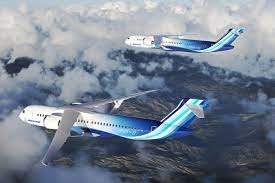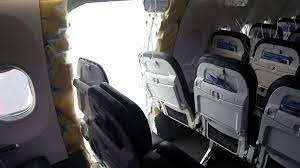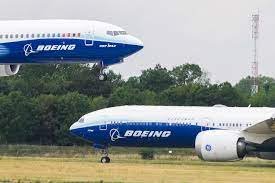
In the chronicles of aeronautics, few narratives have unfolded with the tumultuous gravity and consequential resonance as the arduous journey of Boeing’s 737 MAX. Once lauded as the epitome of innovation, this aircraft has metamorphosed into a protracted saga of unyielding predicaments. From intricate production quandaries to midair calamities, the 737 MAX crisis has eclipsed Boeing under a formidable shadow, triggering a profound scrutiny of aerospace safety standards and, more critically, the delicate fabric of public trust.
Embarking upon the Production Quandary
The genesis of Boeing’s enduring tribulations with the 737 MAX can be retraced to the disclosure of production issues, a revelation that reverberated through the aviation realm. Boeing’s admission of problems with two fittings in the aft fuselage was met with assurances from both the manufacturer and the FAA, asserting the integrity of flight safety. However, these assurances foreshadowed a sequence of events unraveling the very essence of the 737 MAX’s production integrity.
As the aerospace industry peered closely at Boeing’s production plants, concerns heightened about the meticulousness of the manufacturing process. The 737 MAX crisis underscored the industry’s perennial struggle to reconcile efficiency with unwavering safety standards, transitioning from one production juncture to another.
In-Flight Calamities: Exposing Pervasive Flaws in Boeing
The narrative took a harrowing turn with an in-flight incident during an Alaska Airlines flight, leaving an indelible mark on the troubled chronicles of the 737 MAX. A fuselage section disintegrated midair, prompting the immediate grounding of the aircraft variant and raising collective eyebrows over the pervasive flaws ingrained in its design.
This incident became a tipping point, necessitating a reevaluation of the aircraft’s fundamental DNA. The vulnerabilities laid bare by the Alaska Airlines episode hinted at systemic issues extending beyond isolated incidents. As the aviation community grappled with the implications, it became apparent that the 737 MAX’s troubles transcended mere technical hiccups, delving into the core tenets of aviation safety.
Persistent Defects: Imperiling Delivery Targets
The 737 MAX crisis continued its relentless march with the discovery of new defects, further tarnishing Boeing’s once-impeccable reputation. Improper drilling in a component vital for maintaining cabin pressure joined the litany of issues, jeopardizing not only the aircraft’s safety but also casting Boeing’s delivery targets into uncertainty.
These persistent defects fueled the fire, intensifying the industry’s scrutiny of Boeing’s production practices. The question of whether these issues were symptomatic of a broader malaise within the company lingered, casting a formidable shadow over Boeing’s ability to rectify and glean lessons from its mistakes.
Public Relations Crisis: The Unyielding Fallout

The reverberations of the 737 MAX crisis extended beyond technical complexities, weaving a tale of a profound public relations crisis for Boeing. A company that had once been the epitome of aviation excellence found itself grappling with a relentless onslaught on its reputation. The aircraft’s troubled safety history, coupled with recurrent incidents, became a veritable albatross around Boeing’s neck.
As public trust eroded, a pervasive sense of skepticism enveloped Boeing’s communication strategies. The company found itself navigating treacherous waters, where every statement and action was scrutinized with an intensity reflective of the gravity of the crisis. The question of whether Boeing could resuscitate its public image became an urgent concern, forcing the aerospace giant into a meticulous balancing act between transparency and damage control.
Regulatory Scrutiny and Financial Repercussions
The unending stream of challenges cascaded into increased regulatory scrutiny, compelling aviation authorities worldwide to demand transparency and accountability from Boeing. The fallout from the crisis manifested not only in the meticulous review of the 737 MAX but also in financial setbacks. Litigation, compensation claims, and a struggle to restore market confidence became a formidable triad that tested Boeing’s resilience.
Navigating the intricate landscape of regulatory compliance and financial restitution became a herculean task for Boeing. The repercussions of the crisis were not confined to the realm of aviation; they permeated the corporate corridors, signaling a broader reckoning for a company that had once been an unassailable titan in the aerospace industry.
Legacy of Crashes: A Lingering Specter
The 737 MAX crisis cannot be encapsulated without a somber acknowledgment of the two fatal crashes that transpired before the aircraft’s global grounding in 2019. The crashes involving Lion Air Flight 610 and Ethiopian Airlines Flight 302 cast a long, haunting shadow over Boeing’s legacy. The loss of 346 lives laid bare the consequences of a flawed flight control system known as MCAS (Maneuvering Characteristics Augmentation System), unraveling a narrative that went beyond the technical intricacies of an aircraft.
As investigations delved into the root causes of the crashes, the specter of these tragic events lingered, underscoring the profound human cost of a crisis that extended far beyond the boardrooms and assembly lines of Boeing. The lessons learned from these crashes became a focal point in the ongoing discourse surrounding the 737 MAX, propelling the industry toward a critical juncture of introspection and reform.
Remedial Measures and Future Outlook
In the wake of the crisis, Boeing embarked on a journey of remediation. Changes to the 737 MAX’s software and flight control systems were implemented, signaling a commitment to addressing the identified issues and fortifying overall safety. The question of whether these measures would be sufficient in reinstating confidence, both within the industry and among the flying public, loomed large.
The future outlook for Boeing remains shrouded in uncertainty. Rebuilding trust necessitates more than technical fixes; it demands a comprehensive overhaul of corporate culture, communication strategies, and an unwavering commitment to transparency. As Boeing navigates the arduous path of recovery, the aerospace industry watches intently, cognizant of the transformative potential embedded in the crucible of crisis.
In closing, Boeing’s 737 MAX crisis stands as a testament to the intricate interplay between technological innovation, industry practices, and public perception. The unending tribulations besieging Boeing extend far beyond the confines of production floors and engineering blueprints; they delve into the very soul of an industry that transports millions of lives across the skies.
As the aerospace giant grapples with the aftermath of the 737 MAX crisis, the lessons learned resonate far beyond the confines of Boeing’s corporate headquarters. They echo through the corridors of regulatory bodies, reverberate in the boardrooms of competitors, and linger in the minds of passengers who entrust their lives to the wings of innovation.

In the crucible of crisis, the true mettle of an industry is tested. The 737 MAX crisis serves as a stark reminder that the pursuit of progress must be intertwined with an unwavering commitment to safety, transparency, and accountability. The skies may bear witness to the evolution of aircraft, but the indelible lessons etched by the 737 MAX crisis will navigate the trajectory of aviation for years to come.











Comments 1